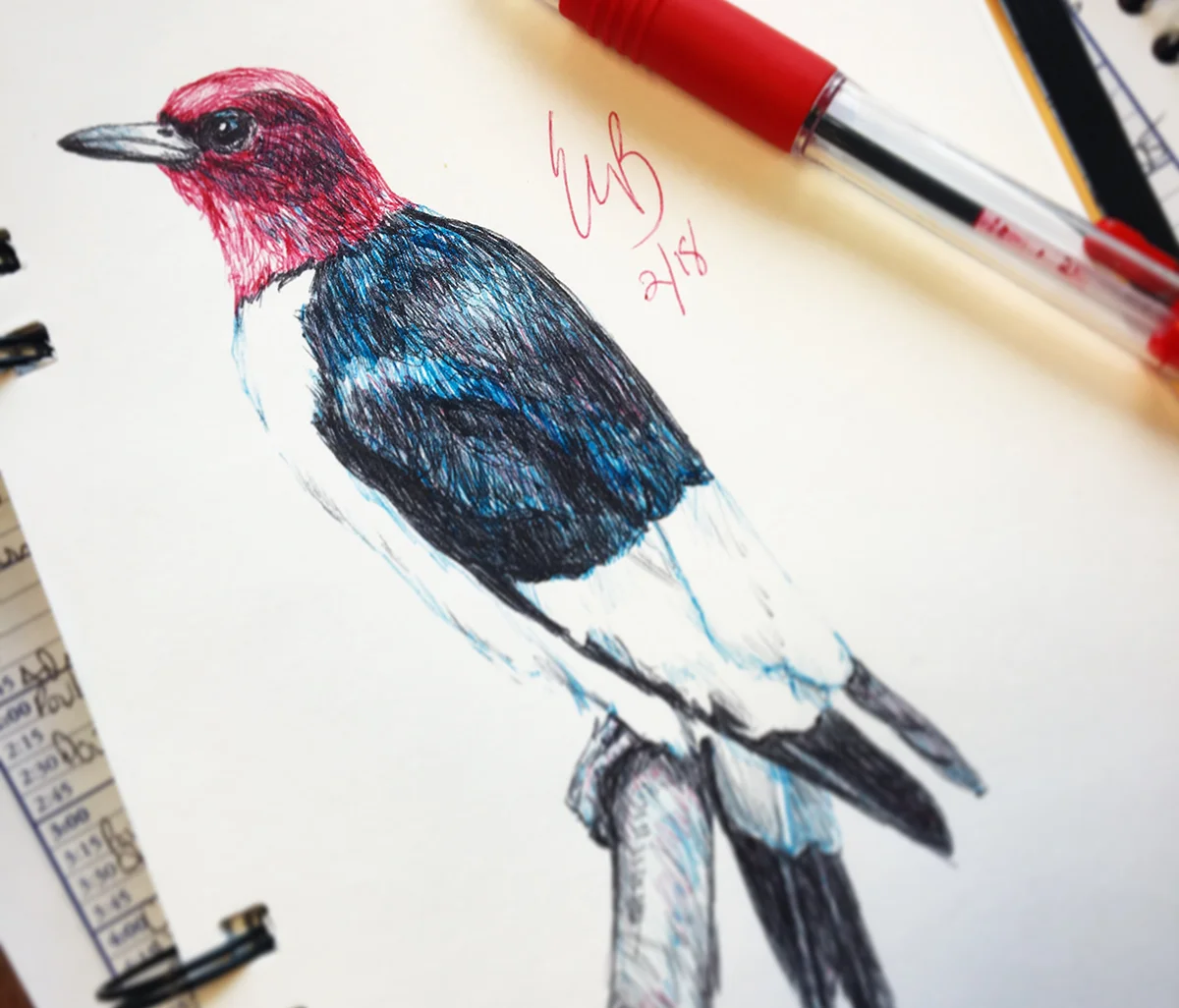10 Tips for Balancing Artistic Practice with Your Other Job(s)
Every fine artist knows it’s not easy to make a living solely from selling artwork, and a lot of the time, it’s simply impossible. It’s no surprise that many artists balance at least one job with their art, often out of necessity. Whether you’ve “made it” or not though, you probably have many competing responsibilities. As an artist who also works a full-time job, I have a few things I do and can suggest for creating balance with your artistic practice. Many of these apply across responsibilities, whether that’s full- or part-time employment, being a parent or caretaker, or volunteer work.
If you’re employed, make sure your job is one that you enjoy most of the time.
While no job is perfect, and very few people are lucky enough to work in careers they absolutely love, having a job you generally enjoy will go a long way to leaving you with the energy you need to create art. With more energy, it’s easier to make the most of any spare time you have, even if it’s only a few minutes. If you are unhappy at your job most of the time, and there’s nothing you can do to change that, I strongly encourage you to try to find employment elsewhere, even if doing so seems like an uphill battle. Even though my job in marketing can be stressful, I genuinely enjoy going to work most days. I get to exercise my analytical capabilities, learn new things, and interact with smart, fun people. People often comment that it’s a shame to not be able to create full time, and they ask whether I’d want to quit my job to paint. The truth is, I wouldn’t. I enjoy what I do, both in marketing and in art.Do what inspires you and makes you happy.
Art doesn’t usually happen in a void. So whether you like spending time outdoors, reading, playing with your kids, or whatever else, make time for it. Feeding your creativity is necessary. If you’re feeling artist’s block, go do something else you enjoy for a while and come back to your project later. My inspiration is mostly found in nature, so I make a point to go outside regularly and take my camera with me. My husband and I also try to travel somewhere interesting twice a year, and hiking is always part of our agenda. This fall, we’re heading to Acadia National Park, just in time to watch the leaves changing color at their peak.Get support.
Whether it’s a friend, a partner, or another family member, having others available to help you when you need it is vital. This goes beyond just alleviating stress or overwhelming situations—your ideal support is someone who is willing to take some responsibilities off your hands intermittently to give you time to create art. It could be as small as taking over a certain household chore one or two nights a week, like cooking dinner or doing dishes. Or it might be something larger, like an afternoon of childcare. I can’t emphasize enough that if you have a partner or spouse, they need to be supportive of you and your work. They may not really care for or understand art themselves, but if they know how much you value it, then they can support you by helping you make time for your art.Make the most of small moments.
Sometimes life happens, and you get really busy, and suddenly a few days or even weeks have passed by without working on any art. When there really isn’t a way to make time for more extended practice, then snagging a few minutes here or there just to sketch can give you a creative outlet. I recommend taking a small sketchbook and a pen with you most places (I use a 5.5”x8” sketchbook, which fits well in my purse) so that you can draw or write in your downtime.Assess how you’re using your time.
Write out your typical weekly schedule. When are you at work? When are you home? When do you run errands? How much time are you spending on household chores? How much time are you spending watching TV? Scrolling through Facebook? Playing games on your phone? Cut out the things that aren’t necessary to keeping you and your family functioning and happy. Get help from your friends and family where you need it, whether for chores or keeping each other accountable for limiting phone games to 30 minutes a day.Set realistic goals for yourself, and do your best to meet them.
The key part of this is being realistic. While some people may have time and resources to submit to several shows per month, for example, you may not—and that’s okay. Simply be more judicious with the shows you choose, and submit to the ones you can work into your schedule and available resources. This goes for other areas too. Being honest with yourself about the time and resources you have can help you manage your own expectations and keep you from getting discouraged.But don’t be a pessimist.
Focus on obstacles only long enough to understand them, and then shift your focus to finding the solution. Know that the solution may not rest solely with you—it’s possible (even likely) that you’ll need help. Don’t be afraid to ask for it.Forgive yourself.
Despite our best efforts, there are times when we all drop the ball. We’re only human. Don’t beat yourself up for missing a deadline, or going a few weeks without putting a pencil to paper, or whatever. It happens. The best thing to do is to acknowledge that it happened, learn from it if there’s anything to learn, and move on. This happened to me recently, actually. I went three weeks without drawing or painting a single thing. I was working a lot of overtime, there were projects that were stressful, and as someone whose escape from anxiety happens to be reading, that’s what I did. I read. Usually three hours a night of escapist fiction. For other people, the escape might be binge-watching Netflix. The point is, I didn’t do any art. And you know what? That’s fine. Sometimes I need that. As long as those behaviors and patterns don’t dominate my life, it’s alright to have periods like that.Take breaks.
Your brain works better when it’s allowed to rest periodically, and when you don’t get that opportunity, the result is often burn-out. Maybe there are people out there who are firing on all cylinders all the time, but I’m inclined to believe they’re an extremely small percentage, if they really exist at all.Don’t ever give up!
Even when life seems impossibly busy and stressful, even when you feel like you’ve failed to reach a goal. It’s all temporary, even the crappy parts. So make the most of what you’ve got, ask for help when you need it, forgive yourself, and keep on creating.
I hope you found these ideas helpful and inspiring! If you have tips, strategies, or ideas for balancing your art with employment or other responsibilities, please share them with me and other readers in the comments!


